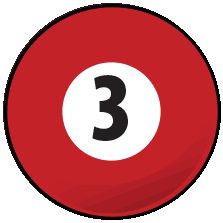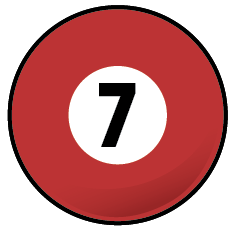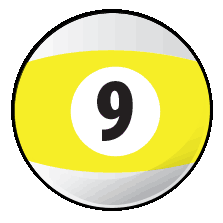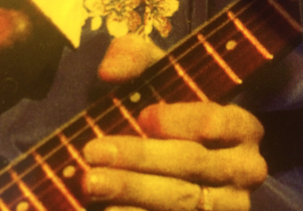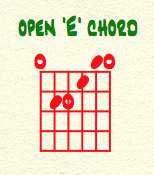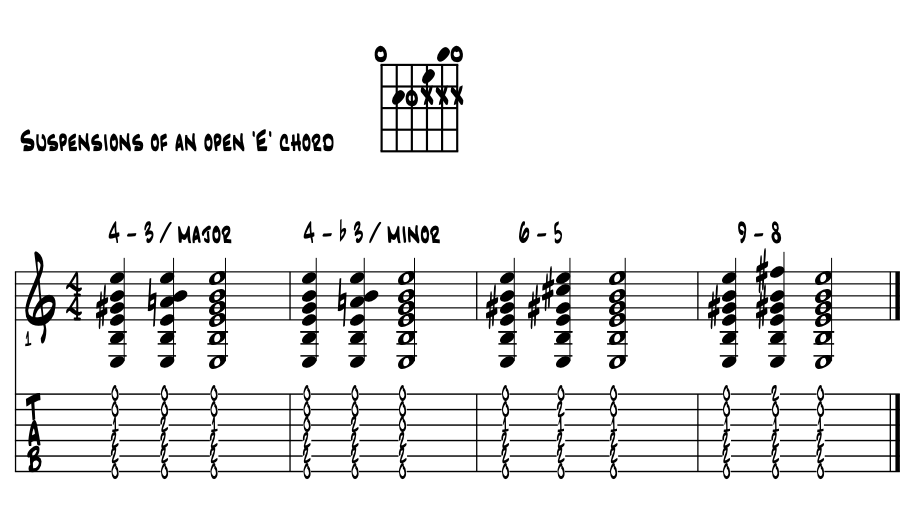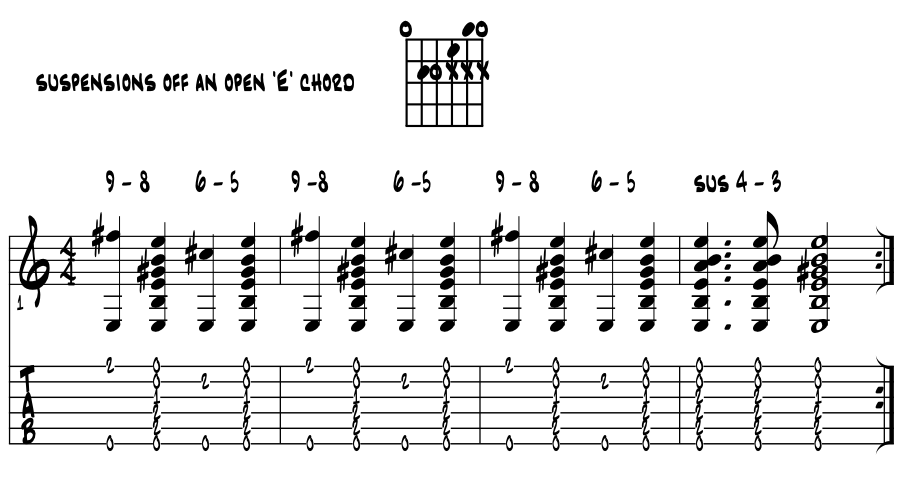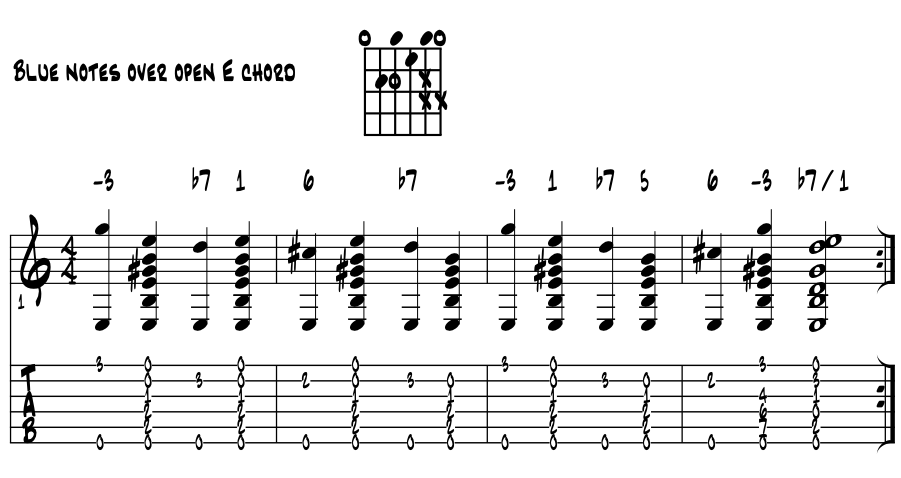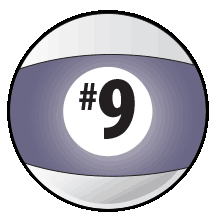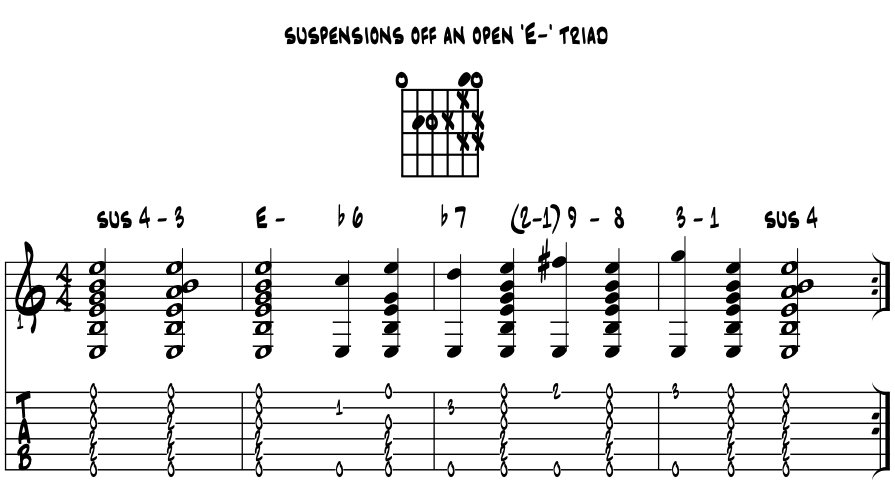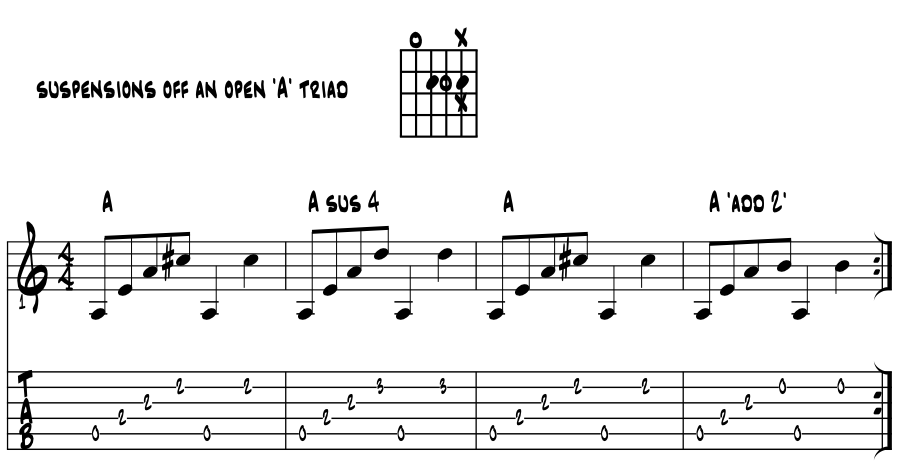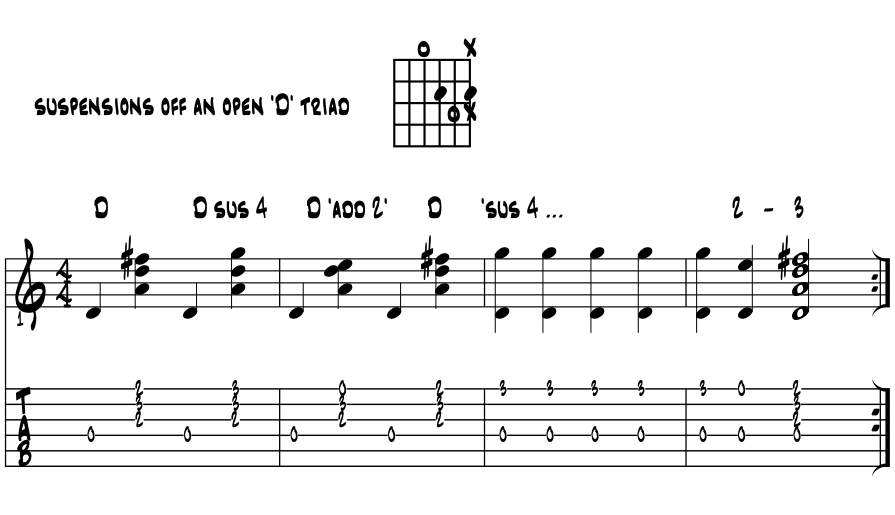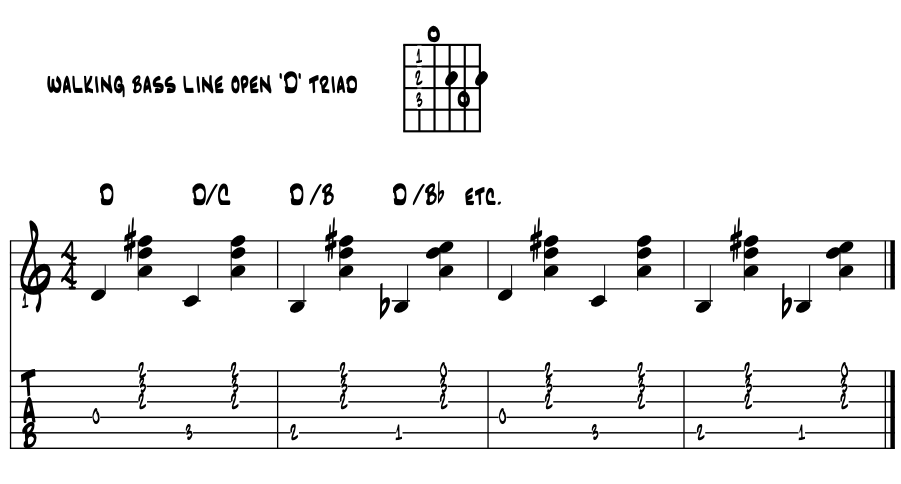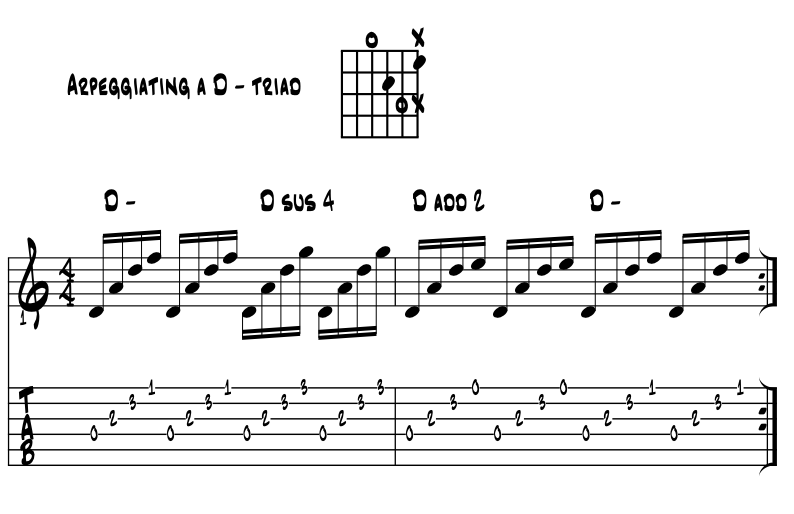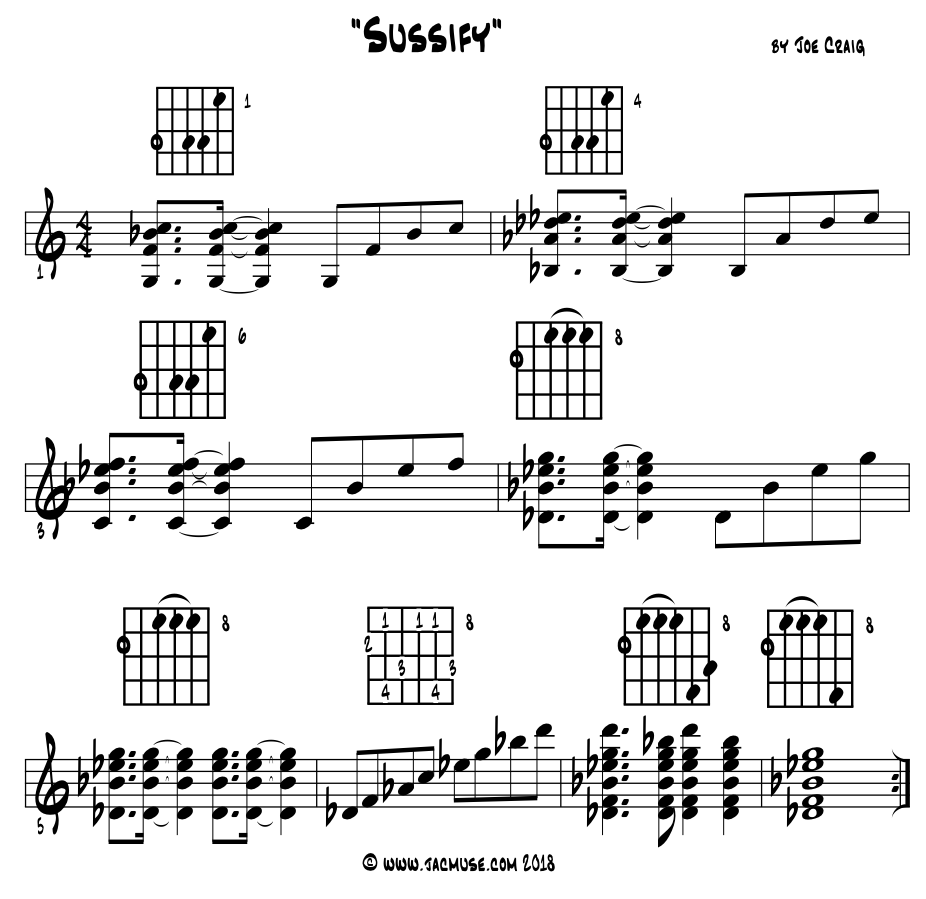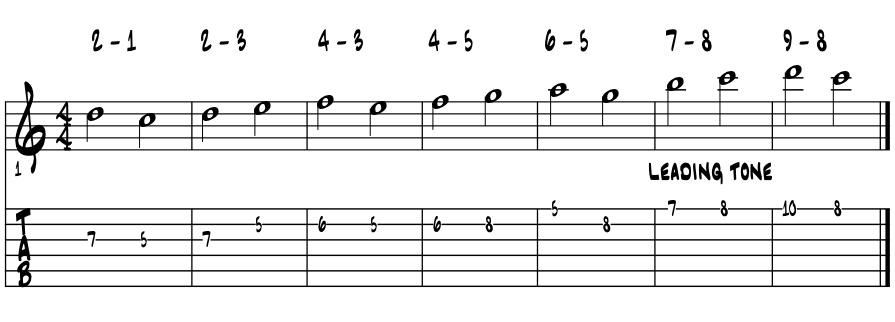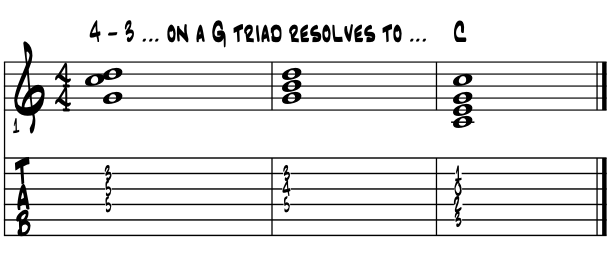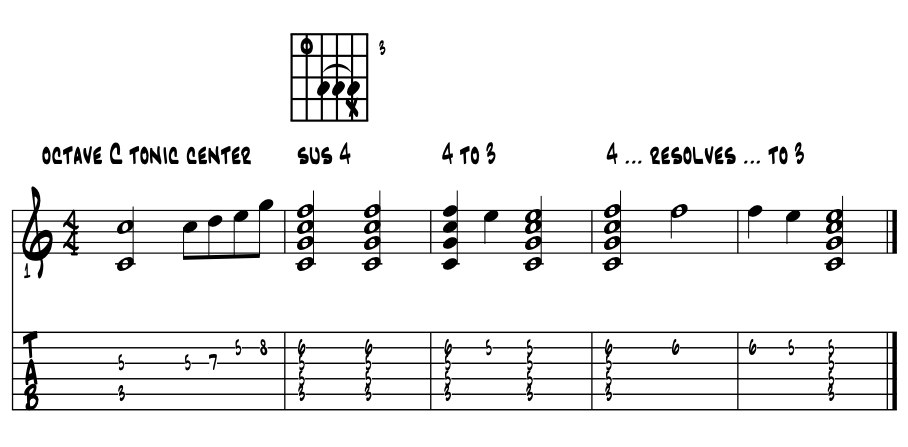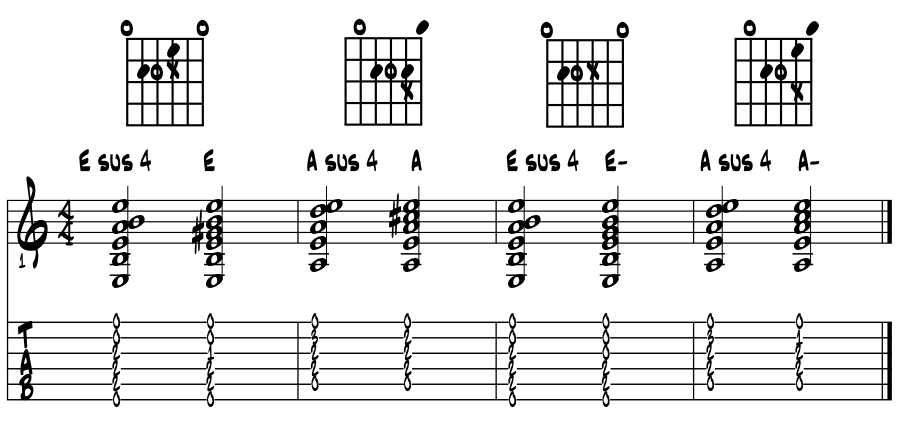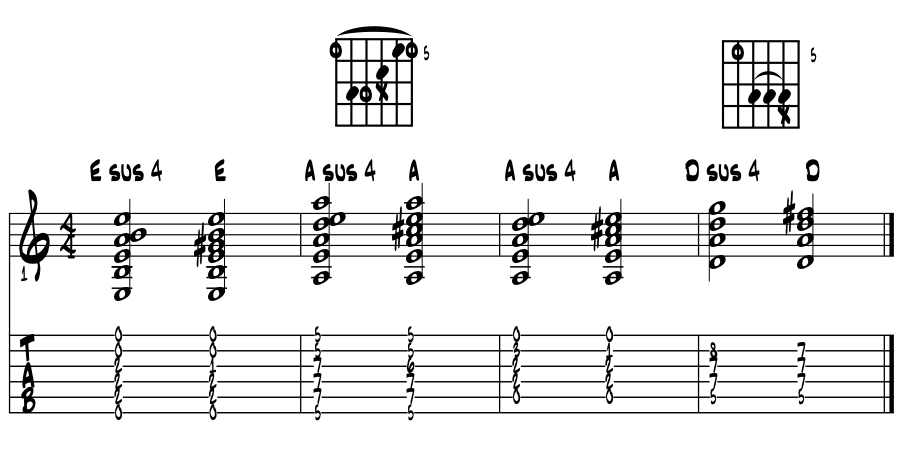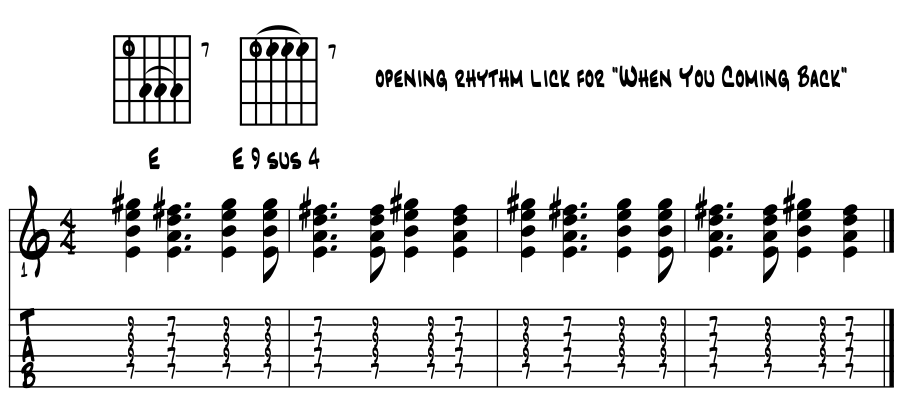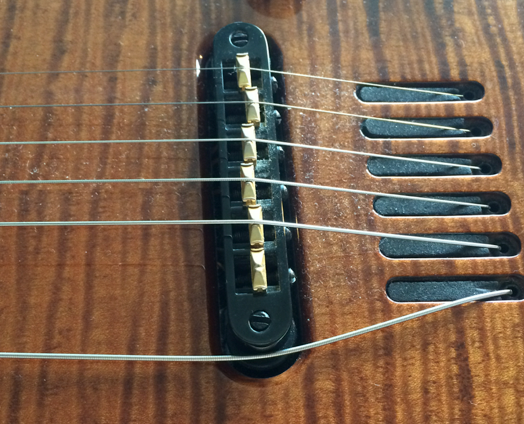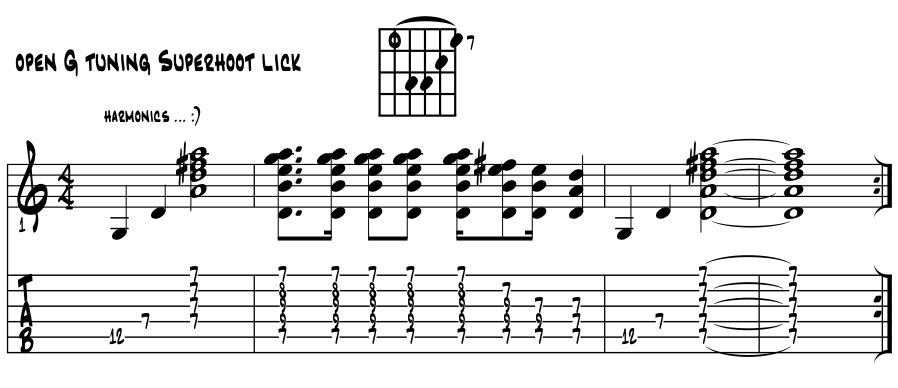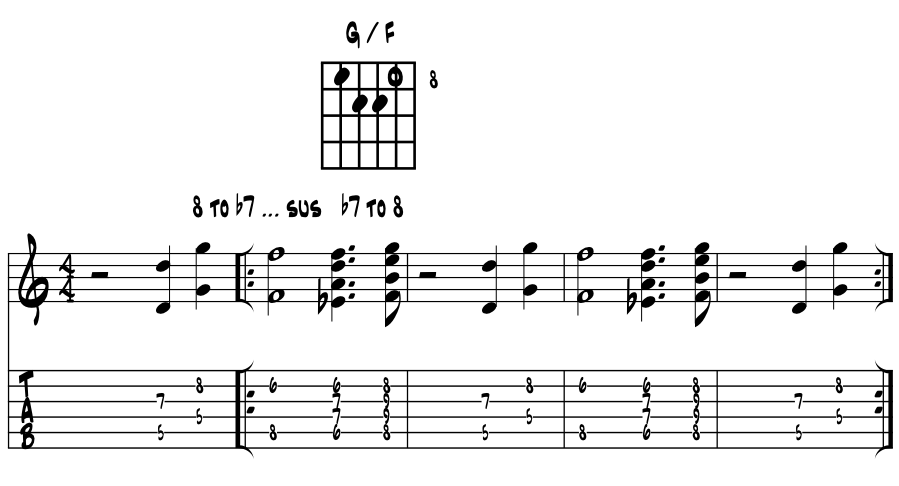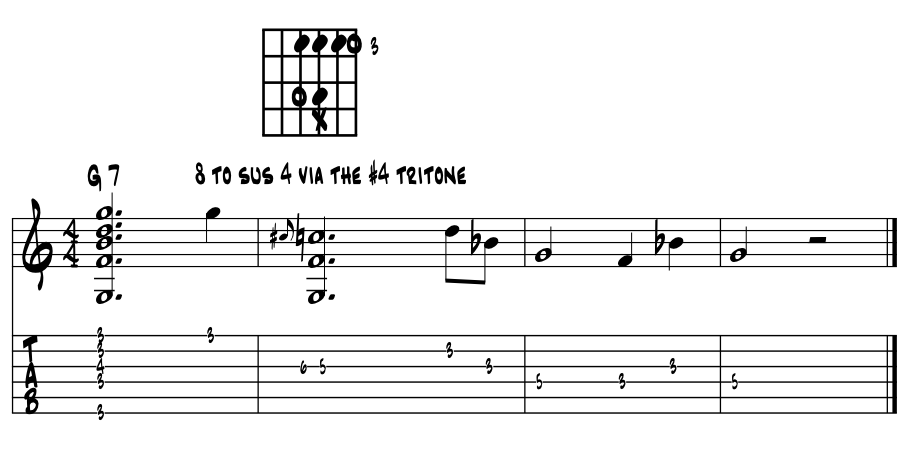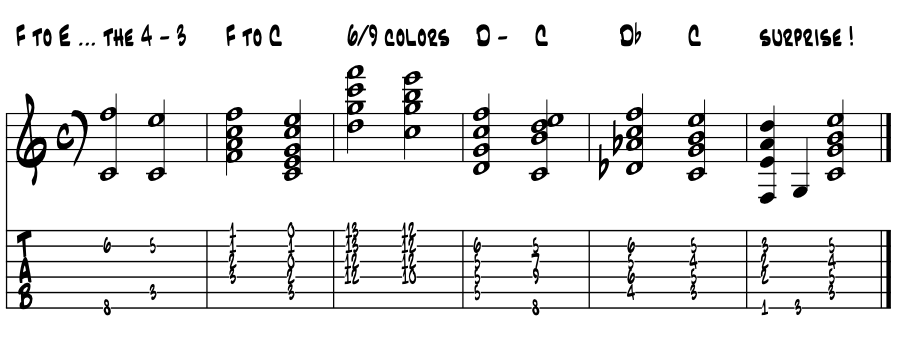~ 'sus' ... suspensions in music ~ ~ musical gravity be gone ... for the time being ~ ~ suspending our sense of musical motion to float through time ~
~ blue note sus ~
|
A nutshell of 'suspensions.' The idea of a 'suspension' or to 'sus' in our musics, is just as this word applies everywhere else; in music we're looking to suspend or 'float' the forward motion rhythm energies of whatever elements we're working with, usually retaining a steady rhythm, in time, looping on 'sus' in a groove. |
Thinking diatonic for melody and harmony, we identify 'sus' by numbers; by raising the 2's to 3's or 2's to 1, 3's 'sus' up to 4th, 6's down to 5, 7's lean up to 8, 9's to 8. What goes up must come down, so these all can flip too; 4 to 3's (epic arena rock with big roar), 5 up to 6 (hammer-on strong minor), octave 8 passing down through the 7's, holding the 9 for a while as written in the following idea. Example 1. |
As another way to make the bar lines go away, these sorts of longer ties and suspensions of the pitches are right in with creating each song's bass line story. And in some songs and grooves we get to stay on one chord, featuring one shape, finding rhythms to suit the mood of the groove. So four and eight bars on just the one chord. We're still moving through time and counting measures now by suspending and sustaining a chord, often with rhythm towards a peak of passion and its passing for the soloist, the color of 'sus' or 'sussing' will get us there. |
Easy by ear. Find and spin the song "Maiden Voyage" by Herbie Hancock and the 'sus' of all things cool and real in 1965 NYC jazz will envelope you, the title track creating a perfect capture of mod 'sus4' vibes of 65.'Sounds like this. Example 1a. Uniquely cool indeed ! With seven pitches in diatonic and five more in between, there's options, plus the possible blue note suspensions, which make the hair stand up, so lots of ways to bring these 'floating' sorts of energies to all the styles and genres. |
|
Quick review. Most any musical element's suspension is simply to create a 'pause', which in turn creates a sense of anticipation for what's to come next. And as with near everything in our creative arts, the boldness of a 'pause' helps define the emotion of the anticipation as a story unfolds, thus can last from a beat or two to a couple of measures all way up to complete suspension of the energy, forward motions and resolutions for the entire song, as in "Maiden Voyage." Cool ? Read on ! |
For some readers here, this can be the most important topic / discussion in this e-book. For from our softest lullabies to the 'heaviest of rock anthems, or to milk milk milking one blue note over V7, to a fleeting, scootin' right along passing diminished chord jazzy art number that potentially becomes endless in its improv travels, 'suspensions' are a way to deepen our emotional expressions ... just a wee bit deeper and can even make the bar lines go away :) And once we each can physically feel what suspensions can do, it just might re-dimensionalize one's perspective of aural art. |
By the numbers makes it easy. In developing an understanding of the why and how we label suspensions, a nice sized piece of the #'s puzzle clicks on in. For all of our essential elements; time, melody, harmony, have a suspension process of their own, each are measurable, and two; melody and harmony, have a super a clear numerical system to identify and label for rote learning them up and instant recall when needed. Understanding the basics of each is our goal. While musical time also has it's numbers to quantify and label, and we'll use them too, suspensions of time is about 'feel' mostly, although if the 'feel' ever gets too tricky to play by ear, counting the beats with #'s is usually the easy fix :) |
Classical cats. Knowing now that super mucho of our Americana theory discussions originate from our Euro harmony influence and the piano, there's a 'King Of Sus' from across the pond, composer Richard Wagner, who surely wore the 'sus' crown at some point during the later 19th century. Mostly writing operas about legendary heros his country the folks loved, one opera is said to have lasted days ... like Coachella I'd imagine. |
|
Three days of music is constructed in part by Wagner's ability to long sustain the drama by long suspensions of the notes and chords in his music. His music shows us the common ways to build chord progressions that 'sus' one into another, creating a sort of veil of colors like Coltrane's 'sheets of sound', but in way more SLOW tempos that float right along on the bows of a giant orchestra. Check it out if you're a curious one :) |
'Sus' by the numbers. So just like a lot of the theory talks here in UYM / EMG, we love to use the numbers to genericize the pitches into pure theory. And with these magical ways to suspend our aural art while moving onward through time, using the numbers to identify the possibilities is kinda built right in. Your choice of course. And we lean 'major' in our machinations, so our numbers reflect that perspective. So in turn, '4-3', '6-5', '9-8', '2-1', '7-8', 'b6-5', 'b7-8', each become an numerical identifier for the way we balance pitches off one another while creating that sense of 'impending' as we tell our tales. |
Time. We can combine pitch and rhythm to suspend the sense of time in our musics. Pitches play off one another and create the 'pull of the sus.' With rhythm we still are thinking in 4/4 time, and the bar lines flow by, but we tie pitches across the barlines, and suspend 'where' we are and where we are going in the music. |
Melody. With melody pitches we create the great and powerful 'sus' by picking one pitch to center our song. All else gravitates to and fro depending on proximity to our central pitch and rhythms to get us there. |
Harmony. Harmony and chords are probably the easiest to 'sus' out. Mostly because we het to combine a few pitches that hold 'sus' magic. There's a handful to know and one, the 4-3, the true essential through the whole tamale. Further on we'll have chord tones and non- chord tones. Using at least three or more pitches, we balance these up various ways to create the sense of 'pull.' Placed into a key center, we can move towards a focus point, push the 'sus' pause button and viola ... a true 'float' in real time and aural space :) |
So what do musical suspensions actually suspend? The pull of tonal gravity between pitches? Yep. That 'pull' we feel when we sound the notes in select combinations. Same 'pull' that makes music swing? Sure is. But how accomplished ? For melody, once we decide on a central pitch within the diatonic scale, the 'pull' of any suspensions to and between the other pitches are already built right in, it's in their architectural structure. |
As artists here, initially we simply want to learn how the suspended notes feel, be able to recognize by ear and numerically label the ones we commonly use through the whole fabric of our Americana styles. Here's two melodic ideas to capture the 'suspended pull' of the tonic pitch. Thinking 'C' major. Example 1. |
Hear and feel the pull towards the resolution to our tonic pitch 'C?' Cool. Seven just 'waits' a bit before moving on up move up to Eight. In the descending line, we get to Two, and just hold up a bit till One arrives. These melody's words could be like, 'only ... you.' :) |
Quick review. This is the physical and aural basis of our suspensions in music. By which pitches we choose, and how we motor them, we can 'suspend' the resolution to our tonic pitch. In some forms of musical expression, 'there's no end to the suspend.' For example, in 'new age' styles, that have that sort of 'gauzy' or veiled texture, are often have a series of suspensions, in a loop or in a sequenced form. That suspensions span everything from holding on for a beat or two to whole compositions that never ever resolve, shows their adaptability and importance in our musics. |
Some songs achieve this suspended character by never going to Four, either in their melody or chords, so no Four chord ... no gospel Americana feel in the song. These musical pieces are often fusionesque; a more modern sounding mix (fusion) of styles and colors. Suspensions have that unique sense of a 'float', that when strung together in songs, can evolve and strengthen our sense and abilities to create and control the 'pull' in our musics. They help us discover new ways to shape and use this 'paused' energy in our musics. |
They're all the same. Is the '4-3' suspension in a folk song is the same '4-3' suspension in a jazz song? Sure is. Pop? Yep. Exact same theory and pitch relationships. Same numerical theory ideas just different grooves and beats etc. Leading tone 7th resolving to the tonic One? Same in all the styles, its the beat, tempos and color tones that help shape a style. So in theory, all of our suspensions run the same way in all of the styles, another key understanding for developing into a 'modern' guitarist. |
The half steps are strongest. Within the diatonic realm, the location of the half steps in the scale formula is where we'll find the strongest sense of 'pull' we get when just working with pitches. So, even with no chords and just gentle rhythms, we lean of suspension to create a deeper emotion to tell our stories. |
With chords, it's easier really. For suspending the triad is a one note deal. We suspend the same note for major and minor. That's nice. 'Sus 4' is the common handle and implies we're pushing the 3rd of whatever chord up to its 4th. 'Sus 4' is the same with all chord. Surely we've other common options with the colortones, all sorts of cool available. Find a few for you in the examples that follow. |
Adding these suspensions in with the crafting ideas of an 'aural predictability' and 'tonal gravity' in the telling of a story, and we then have three basics to shape and build an unfolding of our story, however it my go. These 'shape and build' tools for creating or interpreting a song, becomes the skill set and understanding of the music that helps to empower a 'modern guitarist.' |
Suspensions in the open chords. With the open chords, we get to sound most of our six strings to create the major and minor triads. And while all sorts of colors are available, the suspensions sound very powerful in this open string context. Same theory works on any triad of course and also both in standard and open tunings. Examine the following open chord shapes, their nearby suspensions and other local coolness. Most is the '4 - 3' but look for a few others too, especially minor. Please examine the letter name pitches and common suspensions with the 'open E' chord. Got this one under your fingers? Example 2.
|
numerical scale degrees |
1 |
2 |
3 |
4 |
5 |
6 |
7 |
8 |
E major triad / chord |
E |
F# |
G# |
A |
B |
C# |
D# |
E |
In this next idea we put the major chords and their suspensions into a jaunty sort of sequence. Just add your own 'jaunty' please :) Example 2a. |
'X' marks the spots. Find some nice music in this chord pattern and 'x' marked suspensions? Just work the four bar pattern and find a new ditty. For new players here; find one ditty if you need it, and this one will become the basis of many to follow. For this whole chord shape and its suspensions, a la 'pinky suspensions hammer on's etc.,' has surely been around for a good long while now in all of our styles. Add in your finger picking patterns, flat pick 'em, pluck ( like clawhammer ) is always fun too, as it s a way to articulate the color tones extra nice. So the one ditty here begets a many on down the road :) |
|
Some of the blues hue / open 'E.' Same sort of idea here but sounding off some blue note suspensions with open chord support. Examine blue note pitches over an open 'E7' blues chord in a four bar lick. Example 2b. |
numerical scale degrees |
1 |
2 |
b3 |
4 |
5 |
6 |
b7 |
8 |
E 7 / blues chord |
E |
F# |
G |
A |
B |
C# |
D |
E |
Good chance there's a 100 years of Americana coolness in this last shape and bluesy suspensions for certain. Feel the rub of the blue notes against the V7 chord? Just the blues rub in action. Like to sing the blues too and 'E's just not your key? Find a capo and move it all, to where it needs to be :) |
And those numbers atop the staff. Just so we're cool, realize that '-3' (minor 3rd) above the staff and the note 'G' is also in theory a #9 colortone yes? We've just moving it up an octave? Yep, moved up an octave, 'G to G.' Which one is correct and does it really matter? Both are correct and our distinction here is whether we be talking scales or chords. Scales? It's a minor 3rd, with chords it's #9. We use our labels to communicate musical sounds so, who we are talking with makes it matter, and are we writing our music down in standard notation? Some advice? Be gentle when sharing 'your understand your music theory knowledge.' But you knew that :) |
Suspensions with 'E minor.' This 'E' minor shape goes all the way back. Pair's up with the 'G' major chord mostly, but as a tonic it's a keeper too, so rote learn it here if need be. Example 2c. |
numerical scale degrees |
1 |
2 |
b3 |
4 |
5 |
6 |
b7 |
8 |
E 7 / blues chord |
E |
F# |
G |
A |
B |
C# |
D |
E |
Pretty dark huh? The piano patch doesn't help either in this one. Regardless, a potentially essential two finger chord with some fingers left over to create some coolness with the suspensions. Some fancy pinky work to get to these pitches, we hear this sort of filigree with the these open 'E' minor colors in the corroboratively written David Crosby song "Wooden Ships." |
|
Suspensions with an open 'A' chord. Moving up a perfect 4th from 'E', let's look for the suspended coolness we get with the open 'A' chord. An easy 'chunk' for intro's, examine the scale degree letter name pitches, voicings and numerical suspensions. Easy 'encapsulate' for the 3rd with 'sus 4' and '2' in this next idea, grab a quick strum and make it all go :) Example 3. |
numerical scale degrees |
1 |
2 |
3 |
4 |
5 |
6 |
7 |
8 |
'A' major scale |
A |
B |
C# |
D |
E |
F# |
G# |
A |
A fairly common finger / flat picking arpeggio intro in this last idea. Theory cats would call this 'encapsulating' a chord tone, in this last idea the 'C#' the major 3rd of the 'A' major triad. The 'B to C#' also makes for a common hammer on lick in the bluegrass style. And what's with that 'add 2?' In this next idea same sorts of motion but in minor. 'C# to C and into the lick'. Ex. 3a. |
numerical scale degrees |
1 |
2 |
3 |
4 |
5 |
6 |
b7 |
8 |
'A' major scale |
A |
B |
C |
D |
E |
F# |
G |
A |
Sort of a 'Dust In The Wind' quality yes ? If you be a folk leaning artist, work over these open shapes and suspensions, looking for your own coolness with these now ancient colors. Once you find a pattern that fits your chops and liking, polish it up and have it forever. Chances are you'll use it again and again over time. Oh, and what's with that 'diamond 'G?' in the chord shape? |
|
Suspensions with an open 'D' chord. Moving up a perfect 4th from 'A', let's look for the suspended coolness we get with the open 'D' chord. This bright and cheery critter 'susses' out beautifully and can light the room up with just a strum or two. Example 4. |
numerical scale degrees |
1 |
2 |
3 |
4 |
5 |
6 |
7 |
8 |
'D' major scale |
D |
E |
F# |
G |
A |
B |
C# |
D |
Nice 'walkdown' suspension with an open 'D' chord. This next idea walks the bass notes down to create a nice four bar pattern. Fairly common, try it a couple of times and if you dig it, then learn it here if need be. Example 4a. |
numerical scale degrees |
8 |
b7 |
6 |
b6 |
5 |
4 |
3 |
2 |
1 |
'D' Mixolydian scale |
D |
C |
B |
Bb |
A |
G |
F# |
E |
D |
Note the 'b7' 'C' in the line? Cool. Leans this lick towards 'G' major a bit, making 'D' the Five chord. So the 'C' natural lends some Mixolydian to the mix. The 'Bb?' Well that's more 'Beatlesque" than any theory. Could be a passing tone for sure, a 'sus' moving to Five, 'A.' Nice idea reminiscent of their song "Dear Prudence." |
|
Modal sound 'D' minor sus 4. Potent lick and a chops builder for the right / motor hand. Example 4b. |
|
numerical scale degrees |
8 |
7 |
6 |
5 |
4 |
3 |
2 |
1 |
'D' natural minor scale |
D |
C |
B |
A |
G |
F |
E |
D |
Almost classical huh? Yea, like Mozart or even Chopin. Maybe even leaning "Moonlight Sonata?" |
|
Open 'G' and 'C', two more keepers. Saving some max coolness for last, the open 'G' and 'C' chords just might be the most popular of the open chords. These shapes create the quite common '4 - 3 sus', using their basic open chord shapes. Please examine their letter name pitches by scale degree and resulting sounds. Example 5. |
numerical scale degrees |
1 |
2 |
3 |
4 |
5 |
6 |
7 |
8 |
G major scale |
G |
A |
B |
C |
D |
E |
F# |
G |
numerical scale degrees |
1 |
2 |
3 |
4 |
5 |
6 |
7 |
8 |
C major scale |
C |
D |
E |
F |
G |
A |
B |
C |
Like the sound of the 'G' sus ? Finding that 'C' note at the 1st fret with the index finger for the 'G' sus 4 chord is a way to sound these chords out. Same for the 'C' shape, using the pinky for the 'sus.' Classic Americana sounds, there's a ton of 'gospel sus 4' right in the last four bars. |
|
Basic barre chord 'sus4.' To close out this part of our 'sus' discussion, we should evolve our open 'E' and 'A' shapes into their respective barre chords. Capo lovers? Here's where ya got to work a bit harder as our index finger takes over for the device. Barre chords are completely movable unless 'bad action' on an instrument makes them unplayable. The coolness here? That most anything we can find with the open shapes can apply to the barre shapes. 'Blink of an eye' movable capo? Yep. With a capo, barring some very fancy moves during playing a song, we're 'stuck' in that key center. Thus, the movable barre shapes that get us back into the 12 tone realm of key center possibilities. Examine the basic physical shape evolutions from open string voicings to barre chords, while including our essential 4 - 3 'sus' color. Recognize these shapes from earlier in this discussion? Cool, if not learn them here. Example 6. |
Wow, there's almost a chord progression for a song in that idea ... hmm. So ... those in the know will know that this last bit of 'understanding your music' as a guitar player is a solid gamechanger. If you're a rocker, super solid if you know how to reduce them down to 5th's and crunch up your sound. Regardless, getting these two barre shapes handy and moving back and forth with the ease of a flick of a finger or two goes miles towards opening up your whole tamale. |
Why these shapes are so solid, we might jump around a bit while sounding them :) Here's the basic motion. If just getting these under your fingers, try one strum on each; shape the chord, one strum, 2nd shape, one strum, back to first shape, one strum, 2nd shape, one strum, back and forth till ya got it solid solid solid, for there's a ton of guitar fun right here. Then the flip side of course :) Example 6a. |
Last idea here. Same shapes as above but molded into the One / Four / Five chord progression for a song in a major key then a minor key. Find the hidden 'sus' colors within. In 'G.' Example 6b. |
One / Four / Five chord progression. Everything in our Americana musics loves these three chords. From 12 bar blues through folk and rockin' country and into pop, motion to Four is at the core of it all. Find the 'sus?' No? (Good, there wasn't any :) Sorry, just a bit of a challenge for your radar. Figure out the minor chord shapes from the tab? Cool, just like the 'E' minor and 'A' minor open chord shapes from earlier in this discussion. |
Suspending musical time and tonal gravity. In our tonal centered universe, where one pitch rules them all, there are just times when we want to reshape these two essential components; time and the pull of gravity towards one pitch, for balance and our art expression. |
With musical time, while the boom boom boom keeps on a pulsing :), we can create a bit of magic to mask the beat and momentarily suspend our sense the 'marching of time.' We most often do so by 'adjusting' the gravity pull between the pitches by suspension. |
We can 'suspend' the music as it moves through time by balancing the pitches together in certain ways. Suspended chords are easiest to hear for sure but even in melodies the 'sus' magic still sends those cool chills. So, for the time being, we're just not in Kansas any more :) |
Here's one of mine in a 12 bar form of 'suspended' style chords and onto #15. Vamp and jam song too to take the band to a different place for a spell :) Mostly moving one shape then a modern barre chord or two. 'Sussify' :) Example 7. |
Easy theme of chords, Sound a bit meandering, searching, looking to arrive ? Even the last chord is a bit wispy. To me it sounds as if the resolution is back at the top when the 'G' -11 chord is sounded. Yea well ... it's a modal thing mate, with a make-your-own-ian melody :) So this is what our various suspensions do for us. They 'suspend' the sense of time, forward motion and melodic and harmonic development in our musics. |
The whole tamale :) So an easy way to label up any and all of our suspensions is by using our basic numbers. With a chosen tonic pitch as One, we simply measure the space between the notes and represent this interval as a number. That the numbers only go up to 15 or so makes this convenient. Plus, there's only a handful of 'everyday' intervals. Folk players who want to keep their coffee house folk style concert gig will shy away from near anything past triads. Other end of the spectrum, jazz artists stack triads one atop another and have all 12 pitches handy at all times. In between, everything else :) |
Examine the letter names of the pitches and their corresponding numbers. Thinking in 'C' major, so 'C' is our tonic pitch, the following diatonic suspensions are numerically located. In 5th position. Example 8. |
numerical scale degrees |
1 |
2 |
3 |
4 |
5 |
6 |
7 |
8 |
C major scale / Ionian |
C |
D |
2 ~ 1 or 9 ~ 8 up an octave / 2 up to 3 is stepwise |
|||||
. |
. |
E |
F |
4 ~ 3 common with beyond epic power |
||||
. |
. |
. |
G |
A |
6 ~ 5 classic Americana motion |
|||
. |
leading tone |
B |
C |
7 ~ 8 half step to resolution |
||||
G 7 / V 7 |
2 pitch tritone |
F |
B |
V7 |
||||
Easy enough yes? Here are the pitches. Example 8a. |
So, thinking 'C' major and the pitches are 'F and B.' Interesting that the interval between these two is a tritone; a core of our tension and release dynamic easily found in most musics. The 'F and B' part of V7? Yep, 'G'7 same one. This can be a spark that lights the fuse to kaboom; to a better understanding your music. Explore. In 'C' major, and thinking from the root. Example 8b. |
G 7 / V 7 |
2 pitch tritone |
F |
B |
V7 |
Even before equal temper tuning ... the old 4 ~ 3 :) So even as our triads and chords were evolving, before we had triads, and chords, playable from all the 12 pitches / key centers thanks to equal temper tuning, this '4-3 sus' was a top choice for composers and the Five / One cadential motions. The suspension is found within the triad built on Five. We 'sus' up its 3rd by half step, then moving it down by half step, then resolving to One, like this. Example 9. |
numerical scale degrees |
1 |
2 |
3 |
4 |
5 |
6 |
7 |
8 |
C major scale pitches |
C |
D |
E |
F |
G |
A |
B |
C |
numerical scale / arpeggio degrees |
1 |
4 |
3 |
5 |
. |
. |
. |
. |
Five / arpeggio pitches |
G |
C |
B |
D |
. |
. |
. |
. |
Familiar? Cool. Surely a way of 'heralding' for the resolution which comes. Hip to converting a scale's pitches to its arpeggio, and then into its triads and chords and the color tones beyond? |
Another most common ~ Four / Three :) Easiest to hear and sense perhaps, and also probably most common over our wide range of styles, is the chordal the '4 - 3' suspension on really any single chord. Available both in major and minor key centers, we just delay the impending resolution to the 3rd of any chord. Let your creative sound the 'epic' and begin anew. First in 'C' major, examine its descending letter name pitches sounds. Example 9a. |
numerical scale degrees |
8 |
7 |
6 |
5 |
4 |
3 |
2 |
1 |
C major scale |
C |
B |
A |
G |
F |
E |
D |
C |
Hear the 'amen' effect in the pitches? Cool. The 4-3 suspension is the basis of this Americana. Here's the 4-3 with our open, totally 'epic' chords. Major then minor. Example 9b. |
These totally 'epic' open chords are the two main shapes for making the barre chords of the 1960's yes? Sure are. Here's the mighty '4 - 3' all barred up. Example 9c. |
Moving off the 4-3 suspension for a moment for the big rockin' sus intro for "When You Coming Back." Reducing things down to just the one barre shape and letting the guitar work the magic. Big chance for the motor hand to rock the house. Example 9d. |
So just back and forth between the two barres sets things in motion, take it from there. Great Stones / Van Halen styled intro. |
|
Same 4-3 in open 'G' tuning. Same 4 - 3 sus ideas in open 'G' tuning. Just way too easy to not have a full time grasp of this old oldtime magic from our earlier banjo playing days. Start me up :) Example 9e. |
|
Wow ! An awful lot of '0's in the tab clef ... Also sounds a lot like just One to Four. Yea it does, but there's some 'sus' in there for certain. Regardless, fully movable, explore this open 'G' and then some, for the blues and rock artists there's just a ton of easy fun to be had. Grab a slide and go right back to our blues beginnings. OK to step on a pedal and rock this around a bit? If available ya just might wanna. Example 9f. |
Again wow ! Naa, super wow. So, this potential totally essential boogie woogie jump rock'n roll lick is that easy to play on guitar when the git-thing is 'five stringed and tuned to open G.? Shhh ... :) Might be better not to tell anyone at first, too easy to rock this hard :) If applicable, compose a few new numbas with open 'G.' Or adapt something you already have. Played loud enough, this tuning, and just these few shapes, will rock stadiums globally. What's not to love ? |
Here's one last 'open G sus' idea and it comes from the Superhoot library. There's a cool harmonic at the 12th and 7th frets to kick it, off then the 'core of them all' chord shape and roll em' off pitches borrowing from the same open 'E' chord shape from above. Watch fret numbers close as this is tricky but you'll hear it right off when sounded correctly. Eventually the tune is just a basic vamp between 'D' chord and 'C' chord, with some additional colors etc. Mostly spoken word vehicle with this as the riff / chorus to the verse. Example 9g. |
Cool huh? Yea pretty joyous. The riff works in conventional tuning too but darker as it revolves around the 'E' minor chord. Check it out. |
A most common blues 'sus.' Here's a super cool and fairly common blues suspension with the blue 7th going up to the tonic pitch, thinking blues in 'G.' Example 10. |
numerical scale degrees |
1 |
2 |
b3 |
4 |
5 |
6 |
b7 |
8 |
G blues scale |
G |
. |
Bb |
C |
D |
. |
F |
G |
Cool lick? Yea got the swing built right in. In octaves it'll roll pretty well. Click off right for the whole tune. |
Yet another most essential blues suspension :) In this next idea, we slur into Four from half step above over a tonic G 7 tonic chord. Thinking blues in 'G.' Ex. 10a. |
numerical scale degrees |
1 |
2 |
b3 |
4 |
#4 |
5 |
b7 |
8 |
G blues scale |
G |
. |
Bb |
C |
C# |
D |
F |
G |
This sort of 'slur tritone half step' into Four lick is old as the hills now, probably super cliche too. Yet never fails to bring that blue hue of the purely Americana origins. Presented here in 'G' at the 3rd fret, run it through the blues elevator for additional coolness. |
Motion to Four. Well documented throughout that the author thinks that motion to Four is the basis of motoring the Americana musics all along. And once we arrive at Four, and hang for whatever spell of time, we tend to make our way back to One. And if we hold over our Four chord root melody note just a wee bit, i.e., suspend it a bit beyond the barline, and presto, 4 ~ 3 suspension. Thus '4' resolves to the 3rd of our tonic major triad. Here's a couple of motions of this 4-3 resolution, now with additional color tones and a surprise or two. Example 11. |
The octaves are solid yes? Four to One in open chords is a folk tradition. The 6/9 colors are rockabilly / jazz leaning as is the Two chord often subbing for Four. Latin flavored 'flat Two to One' montuno with the 4 - 3 motion non-diatonic rooted chords that gets us to the same destination and a surprise 2 - 3 to close the line. |
Review. So in composing our works, songs, improvisations and telling our stories in general, there's times when we just need to take a breath, create some suspense, create a vision with our music of an epic event yet to come, to 'float' a bit and settle. Suspensions allow these things to happen in various ways. Mostly we're pulling non chord tones against chord tones, stacking pitches together that 'rub' one another to create that magic buoyancy of aural color. Other times we suspend to announce, as in the intro's of lot's of popular music. We can dedicate whole songs to the suspended feeling, creating a new way for our tonal expressions outside of the chord progressions and cadential motions of most of our musics. These often go modal, thus taking us back in search of ancient melodies. |
"I don't know anything about music, in my line of work you don't have to." |
wiki ~ Elvis Presley
|
References. References for this page come from the included bibliography from formal music schools and the bandstand, made way easier by the folks along the way. In addition, books of classical literature; from Homer, Stendahl and Laudurie to Rand, Walker and Morrison and of today, provided additional life puzzle pieces to the musical ones, to shape the 'art' page and discussions of this book. Special thanks to PSUC musicology professor Dr. Y. Guibbory, who 40 years ago provided the initial insights of weaving the history of all the fine arts into one colossal story telling of the evolution of AmerAftroEurolatin musical arts. And to teacher-ed training master, Dr. Joyce Honeychurch of UAA, whose new ideas of education come to fruition in an e-book. |
"Life is about creating yourself." |
wiki ~ Bob Dylan |
Find an e-book mentor. Always good to have a mentor when learning about things new to us. And with music and its magics, nice to have a friend or two ask questions and collaborate with. Seek and ye shall find. Local high schools, libraries, friends and family, musicians in your home town ... just ask around, someone will know someone who knows someone about music who can help you with your studies of the musical arts with this e-book. |
Intensive tutoring. Luckily for musical artists like us, the learning dip of the 'covid years' can vanish quickly with intensive tutoring. For all disciplines; including all the sciences and the 'hands on' trade schools, that with tutoring, learning blossoms to 'catch us up.' In music ? The 'theory' of making musical art is built with just the 12 unique pitches, so easy to master with mentorship. And in 'practice ?' Luckily old school, the foundation that 'all responsibility for self betterment is ours alone.' Which in music, and same for all the arts, means to do what we really love to do ... to make music :) |
 |
"These books, and your capacity to understand them, are just the same in all places. Always bear in mind that your own resolution to succeed, is more important than any other one thing." |
|
Academia references of Alaska. And when you need university level answers to your questions and musings, and especially if you are considering a career in music and looking to continue your formal studies, begin to e-reach out to the Alaska University Music Campus communities and begin a dialogue with some of Alaska's finest resident maestros ! |
|
Formal academia references near your home. Let your fingers do the clicking to search and find the formal music academies in your own locale. |
"Who is responsible for your education ... ? |
'We energize our learning in life through natural curiosity and exploration, and in doing so, create our own pathways of discovery.' Comments or questions ? |
